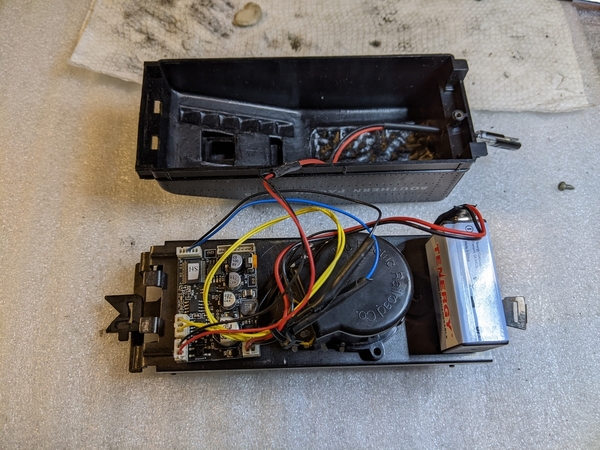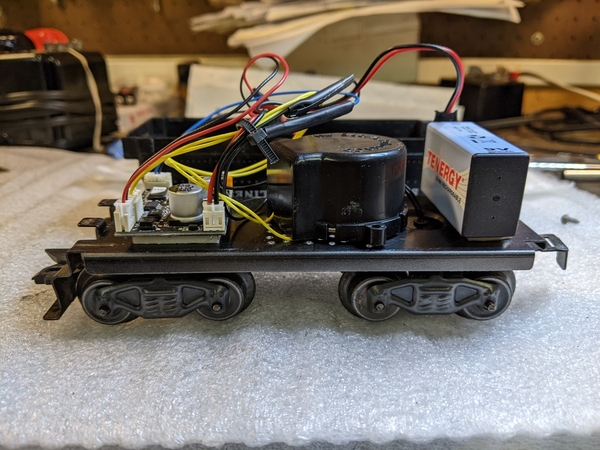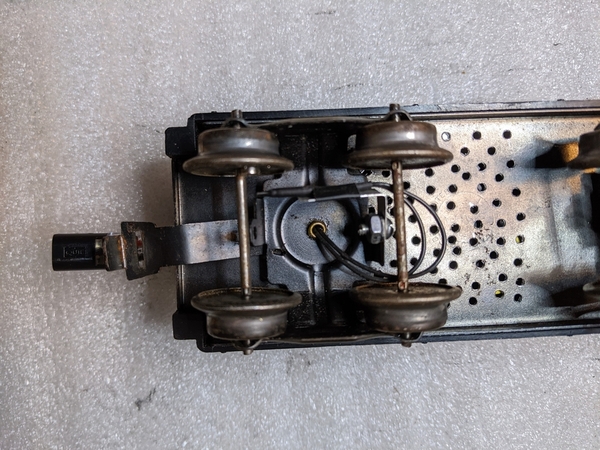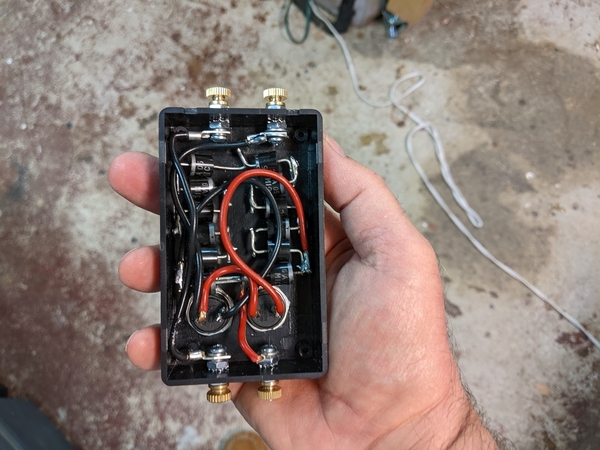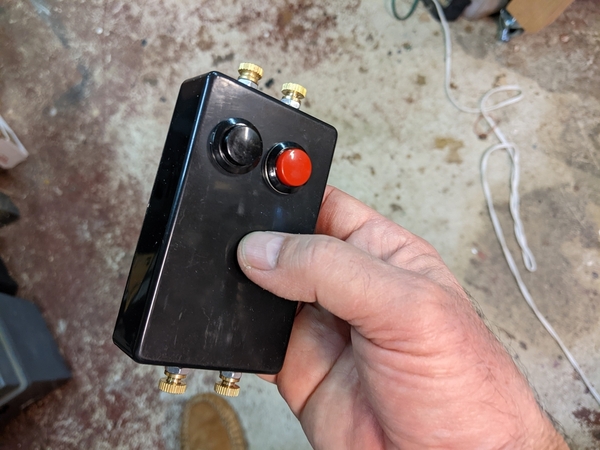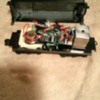I recently upgraded a Marx 666 steam locomotive with steam sounds using an ERR Railsounds Commander steam kit. I am very pleased with the results. It was not a real easy project - it was challenging but also rewarding.
I purchased the ERR Railsounds Commander on-line from the The Western Depot in Yuba City CA. The unit I bought was a Steam RailSounds Daylight (Air Horn), model number ERRRSDAYSTEAM. The unit came with everything I needed for the installation, including a circuit board, a speaker, a reed switch, a magnet, wiring, and a double-stick adhesive mounting board for the circuit. I decided to install all of these components in A Marx slope-back tender. The pictures below show the mounting arrangement. The speaker is pointed downwards - so I had to drill numerous holes in the steel chassis plate in order to allow the sounds to propagate outward. I installed a rechargeable 9V NI-MH battery using the supplied cable. The battery allows the sound kit to play an audio clip of the steam shutdown sequence when transformer power has just been turned off. This audio clip concludes with a mighty blast of the air horn. I fabricated a light-gauge aluminum L-bracket to hold the reed switch in place under the tender's front truck. This reed switch is basically a sensor that will signal a "chuff" sound whenever a magnet passes in front of the sensor. The magnet is connected to the inner surface of one of the wheels of the tender's front truck. The ERR Railsounds Commander draws track power from a tethered connection to the locomotive. I used some pluggable 20-24 ga wire quick connectors to connect the tender to the locomotive.
The ERR Railsounds commander has both a whistle (horn) and a bell. Since my old post-war Lionel transformers only have whistle controllers, I decided to build my own whistle & bell controller after being inspired by Gunrunner John. Here is a link to the circuit diagram that Dale H posted:
https://jcstudiosinc.com/Whist...tton-Bell-Controller
I used 12 each 6A, 50V diodes, a couple of NO momentary contact push buttons, a black plastic project case, and other assorted wiring & hardware. The finished controller is shown in the photos below. One thing that I didn't include is the 36V bi-directional Zener diode for transient voltage suppression. I will add that shortly though, as soon as my supplier sends it to me. I should point out that this controller is suitable for use with 275 watt Lionel ZW transformers, but does not work very well with Lionel 90 watt 1033 transformers - because there is too much voltage drop from the diodes. I should also point out that the diodes get really warm inside my enclosure. I am really concerned about this. Maybe I should use a bigger enclosure affording more separation between the diodes and lots of perforations for ventilation.
It took me about 6 hours to install the ERR Railsounds Commander Steam Kit, and it took me another 6 hours to build the horn & bell controller. I probably spent about $150 on all the components.




